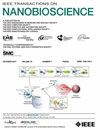多层残差双注意网络在脑血管疾病诊断中的脑主动脉MRA分割。
IF 3.7
4区 生物学
Q1 BIOCHEMICAL RESEARCH METHODS
引用次数: 0
摘要
脑主要血管的分割对于脑血管疾病的诊断和随后的手术计划非常重要。血管分割是用于几种血管病理的自动诊断或治疗的各种算法的重要预处理步骤,因此,拥有一个性能良好的血管分割管道是很有价值的。在本文中,我们提出了一种端到端的多尺度残差双注意深度神经网络,用于弹性主脑血管分割。在所提出的网络中,U-Net的编码器和解码器块被多级atrous残差块取代,以通过增加感受野来提取各种语义粗粒度和细粒度特征来增强学习能力。在瓶颈中加入双注意力块,进行有效的多尺度信息融合,获得血管的详细结构。这些方法在公开的TubeTK数据集上进行了评估。所提出的方法在全脑预测方面优于最先进的技术,骰子为0.79。统计和视觉评估表明,与传统的U-Net及其变体相比,所提出的网络对异常值具有鲁棒性,并在血管连续性方面保持更高的一致性。本文章由计算机程序翻译,如有差异,请以英文原文为准。
Multi-Level Residual Dual Attention Network for Major Cerebral Arteries Segmentation in MRA Toward Diagnosis of Cerebrovascular Disorders
Segmentation of major brain vessels is very important for the diagnosis of cerebrovascular disorders and subsequent surgical planning. Vessel segmentation is an important preprocessing step for a wide range of algorithms for the automatic diagnosis or treatment of several vascular pathologies and as such, it is valuable to have a well-performing vascular segmentation pipeline. In this article, we propose an end-to-end multiscale residual dual attention deep neural network for resilient major brain vessel segmentation. In the proposed network, the encoder and decoder blocks of the U-Net are replaced with the multi-level atrous residual blocks to enhance the learning capability by increasing the receptive field to extract the various semantic coarse- and fine-grained features. Dual attention block is incorporated in the bottleneck to perform effective multiscale information fusion to obtain detailed structure of blood vessels. The methods were evaluated on the publicly available TubeTK data set. The proposed method outperforms the state-of-the-art techniques with dice of 0.79 on the whole-brain prediction. The statistical and visual assessments indicate that proposed network is robust to outliers and maintains higher consistency in vessel continuity than the traditional U-Net and its variations.
求助全文
通过发布文献求助,成功后即可免费获取论文全文。
去求助
来源期刊

IEEE Transactions on NanoBioscience
工程技术-纳米科技
CiteScore
7.00
自引率
5.10%
发文量
197
审稿时长
>12 weeks
期刊介绍:
The IEEE Transactions on NanoBioscience reports on original, innovative and interdisciplinary work on all aspects of molecular systems, cellular systems, and tissues (including molecular electronics). Topics covered in the journal focus on a broad spectrum of aspects, both on foundations and on applications. Specifically, methods and techniques, experimental aspects, design and implementation, instrumentation and laboratory equipment, clinical aspects, hardware and software data acquisition and analysis and computer based modelling are covered (based on traditional or high performance computing - parallel computers or computer networks).
 求助内容:
求助内容: 应助结果提醒方式:
应助结果提醒方式:


